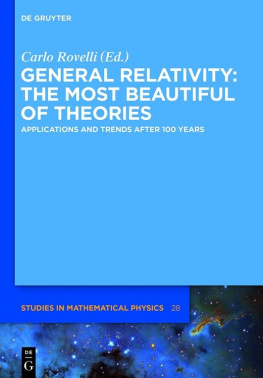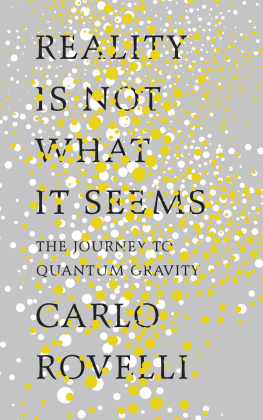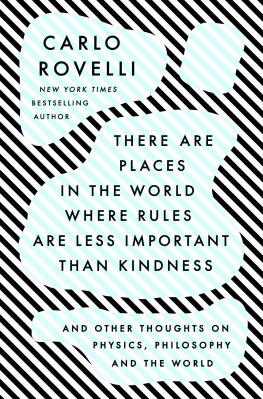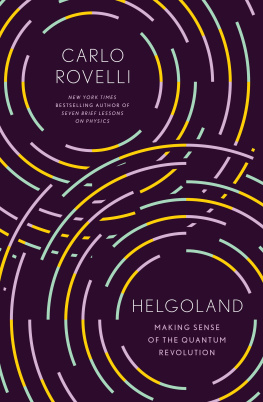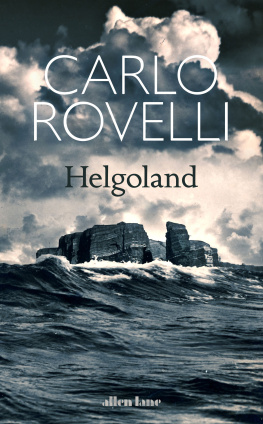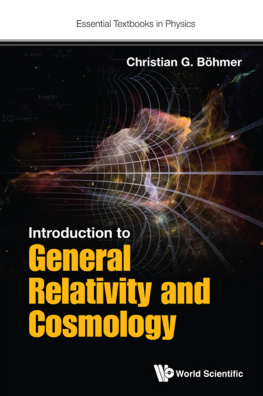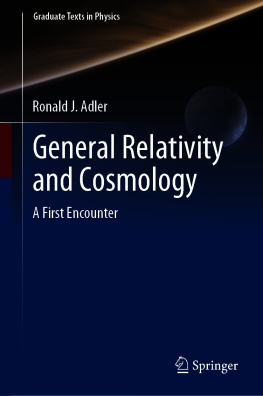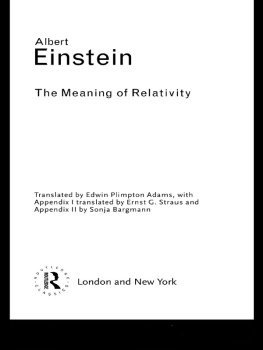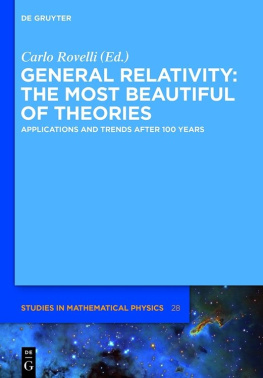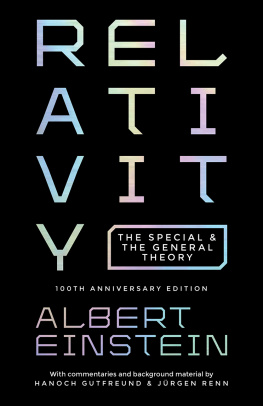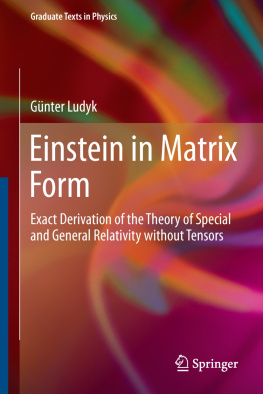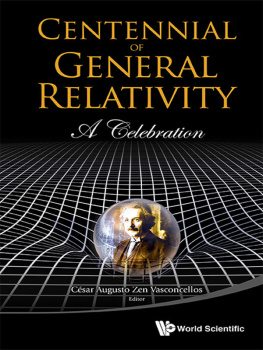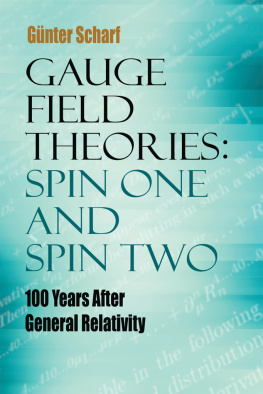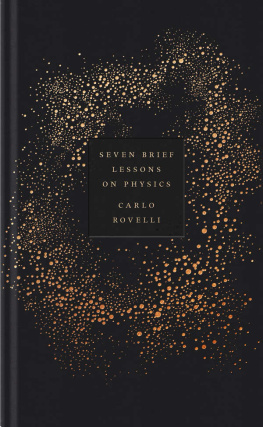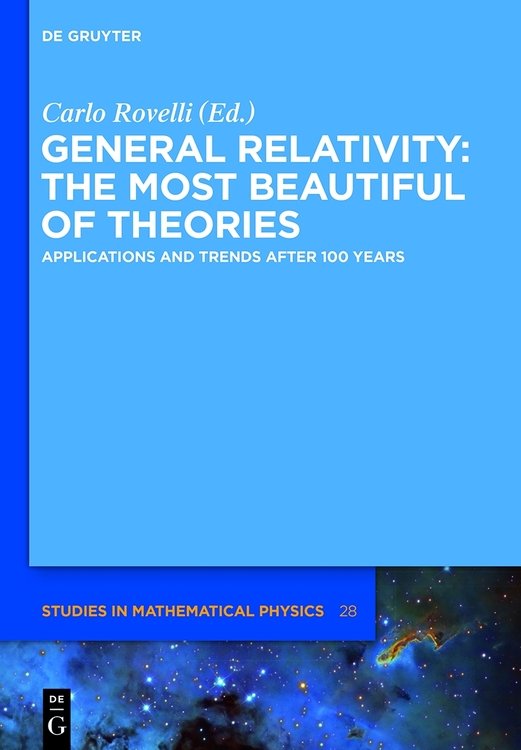Prof. Dr. Andrew Fabian
University of Cambridge
Institute of Astronomy
Madingley Road, Cambridge
CB3 0HA, UK
acf@ast.cam.ac.uk
Prof. Dr. Anthony Lasenby
University of Cambridge
Department of Physics, Cavendish Laboratory,
JJ Thomson Avenue, Cambridge
CB3 0HE, UK
a.n.lasenby@mrao.cam.ac.uk
Prof. Dr. Gene Gilbert Byrd
University of Alabama
Department of Physics and Astronomy
206 Gallalee Hall, 514 University Blvd.
Tuscaloosa, AL
35487-0324, USA
byrd@ua.edu
Prof. Dr. Arthur D. Chernin
Moscow State University
Sternberg Astronomical Institute
Universitetskii pr. 13, Moscow
119992, Russia
chernin@sai.msu.ru
Dr. Pekka Teerikorpi
University of Turku
Department of Physics and Astronomy
Vislntie 20, Piikki
21500, Finland
pekkatee@utu.fi
Prof. Dr. Mauri Valtonen
University of Turku
Department of Physics and Astronomy
Vislntie 20, Piikki
21500, Finland
mauri.valtonen@utu.fi
Prof. Dr. Ignazio Ciufolini
University of Salento
Department of Innovation Engineering
Via per Monteroni, Lecce
73100, Italy
and
Centro Fermi
Piazza del Viminale 1, Roma
00184, Italy
ignazio.ciufolini@unisalento.it
Prof. Dr. Neil Ashby
University of Colorado
Department of Physics
390 UCB, Boulder CO
80309-0390, USA
ashby@boulder.nist.gov
Prof. Dr. Carlo Rovelli
Aix-Marseille University
Centre de Physique Thorique de Luminy
Case 907, Luminy
13288 Marseille, France
rovelli@cpt.univ-mrs.fr
De Gruyter Studies in Mathematical Physics
Volume 27
Ivan A. Lukovsky, Peter V. Malyshev
Nonlinear Dynamics, 2015
ISBN 978-3-11-031655-1, e-ISBN (PDF) 978-3-11-031657-5,
e-ISBN (EPUB) 978-3-11-038973-9, Set-ISBN 978-3-11-031658-2
Volume 26
Vincent Laude
Phononic Crystals, 2015
ISBN 978-3-11-030265-3, e-ISBN (PDF) 978-3-11-030266-0,
e-ISBN (EPUB) 978-3-11-038791-9, Set-ISBN 978-3-11-030267-7
Volume 25
Sergey D. Algazin, Igor A. Kijko
Aeroelastic Vibrations and Stability of Plates and Shells, 2015
ISBN 978-3-11-033836-2, e-ISBN (PDF) 978-3-11-033837-9,
e-ISBN (EPUB) 978-3-11-038945-6, Set-ISBN 978-3-11-040491-3
Volume 24
Igor O. Cherednikov, Tom Mertens, Frederik F. van der Veken
Wilson Lines in Quantum Field Theory, 2014
ISBN 978-3-11-030910-2, e-ISBN (PDF) 978-3-11-030921-8,
e-ISBN (EPUB) 978-3-11-038293-8, Set-ISBN 978-3-11-030922-5
Volume 23
Boris A. Arbuzov
Non-perturbative Effective Interactions in the Standard Model, 2014
ISBN 978-3-11-030292-9, e-ISBN (PDF) 978-3-11-030521-0,
e-ISBN (EPUB) 978-3-11-038805-3, Set-ISBN 978-3-11-030522-7
www.degruyter.com
Carlo Rovelli
The most beautiful physical theory
The most beautiful of all existing theories.
Landau and Lifshitz
Probably the greatest scientific discovery that was ever made.
Dirac
Scarcely anyone who fully understands this theory can escape from its magic
Einstein
(All quoted in S. Chandrasekhar, J. Astrophys. Astr (1984), 311.)
Odyssey, the Sistine Chapel, King Lear.... They gives us new eyes to see the world from a novel and deeper perspective. General relativity, the jewel of Albert Einstein, is one of these.
Conceived almost in isolation, without a single element of new empirical data, based on an acute reflection on the scientific knowledge available at the time and on the courage of challenging common sense frontally, general relativity is just a simple idea and a few lines of equations. But an astonishing wealth of incredible predictions follow from these: time runs faster on the mountains than at seaside; light does not travel in straight lines; space-time bends, and can tremble over the vast interstellar lands like the surface of a lake under a soft wind; it can bend over the weight of a star to the point of collapsing into a hole where all things and even light can enter but not come out; the entire universe cannot stay put, but must contract or expand, and in fact is born from a fiercely hot concentrated core....
All this sounds like a tale told by an idiot, full of sound and fury, more than sober results of physicistss calculation. And much of this was still seen as such when I studied at the university. Steven Weinbergs 1972 general relativity textbook still calls the black holess horizons hypothetical and says that r = 2 m Schwarzschild radius does not seem to have much relevance for the real world (page 207)!
Instead, it has all come true. The universe has turned out to be truly so kaleidoscopic: one after the other, years after year, all the astonishing predictions derived from the theory have been confirmed by observations.
Today we measure the difference of the rate at which time flows at a few decimetres of elevation difference; the evidence for black holes is overwhelming; the evidence for gravitational waves is indirect, but very strong; nobody questions anymore the idea that the universe expands and has evolved from a hot and dense core... Physics is not new to spectacular predictions: Newtons theory has been used to deduce the existence of Neptune before seeing it, Dirac has predicted antimatter, Maxwell the electromagnetic waves, the standard model of particle physics has predicted the Higgs particle, and so on. But no theory has predicted a sequence of previously unconceivable aspects of reality like general relativity.
Carlo Rovelli: CPT-CNRS, Case 907, Luminy, 13288 Marseille, France
I remember my emotion when I began understanding something about the theory. It was summer. I was on a beach in Calabria, immersed in the Mediterranean glare, perfuming of ancient Greece, at the time of my last university year. Holidays is when one studies better, without the schools distractions. I studied on a book gnawed by mice; I had used it to block the holes of these little creatures, at night, in the hippy house on the Umbrian hill where I used to take refuge from the boredom of University lectures. Every once in a while, I raised my eyes from the worn out book, to stare the sparkle of the sea: I could almost see the bending of space and time. It was like magic, as a soft friends voice whispering an extraordinary secret truth at my ear, a veil being moved from reality, revealing a new glimpse of its hidden beauty.
Since we learned that the Earth is round and spinning, we have realised that reality is not as it appears: every time we understand a new piece of it, is an emotion. Another screen that falls. But among all the many leaps forward in our knowledge, one after the other in the course of history, the one made by Einstein from 1907 to 1915 is probably a leap without equals.
For one thing, the theory is of breathtaking simplicity. Newton tried to explain why things fall and planets revolve. He imagined a force that pulls bodies toward one another. How could this force pull things far away from each other, without anything acting in between, was quite unclear, and the father of science cautiously didnt feign hypotheses. He also imagined that bodies move in space. The nature of such space, a sort of container of the world, which Newton did feign, was not clear either. But a few years before Alberts birth, Faraday and Maxwell had added an ingredient to Newtons cold universe: the electromagnetic field, a real entity filling space and carrying the electric force. Einstein, fascinated from childhood by the electromagnetic field, that pushed the rotors of the power plants built by his father, soon realised that gravity, like electricity, had to be carried by a field. And here came the extraordinary idea: the gravitational field is not widespread in space: the gravitational field is space.

